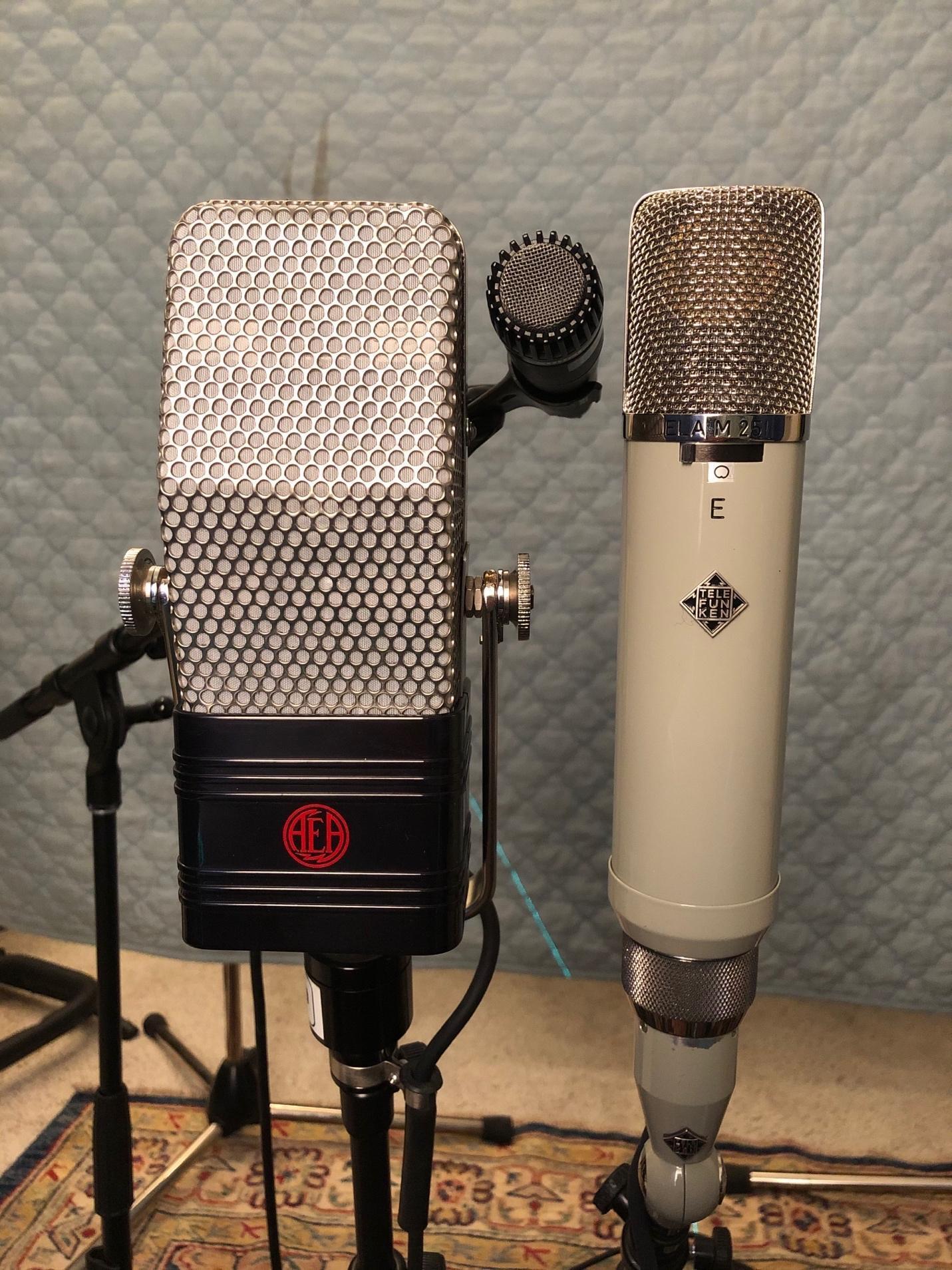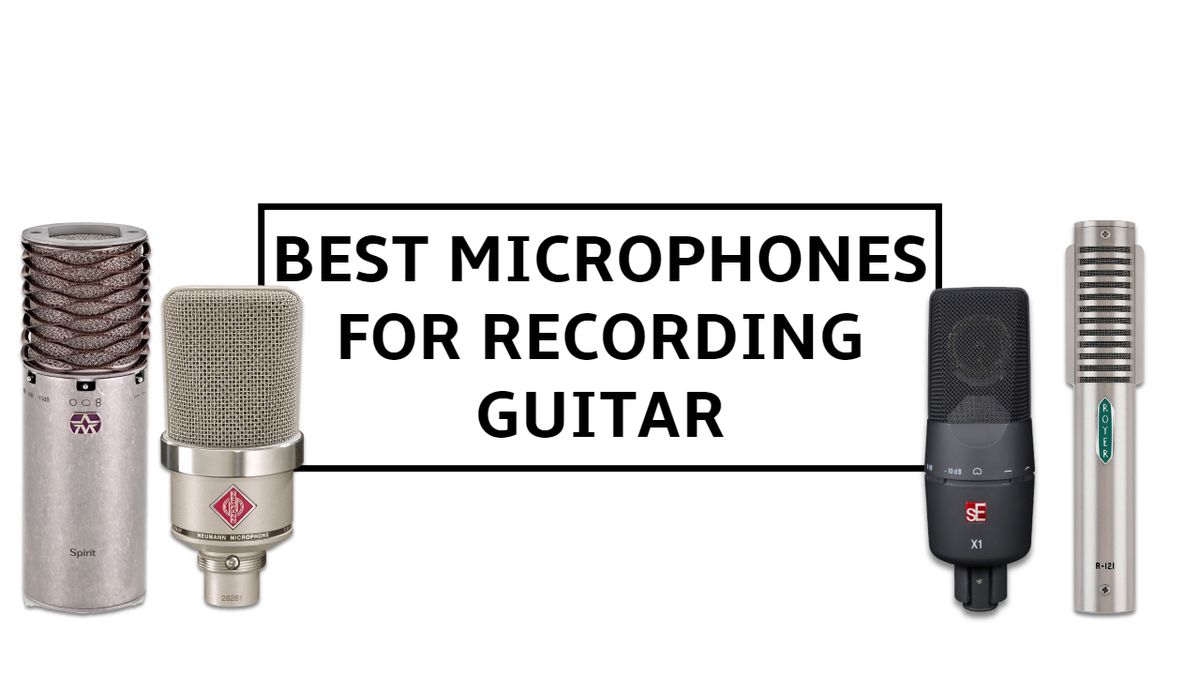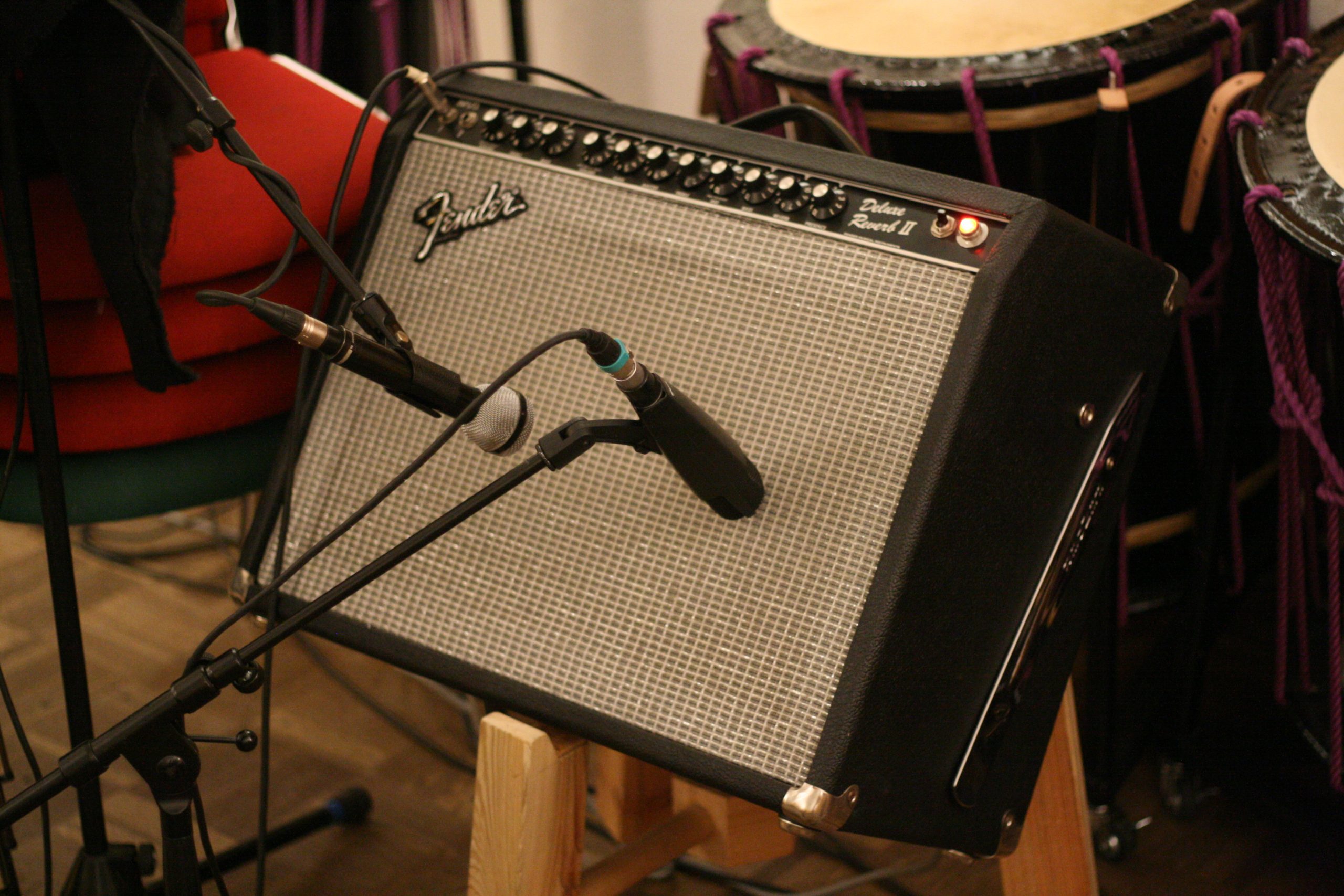Dynamic microphones are best for recording electric guitar, due to their durability and ability to handle high sound pressure levels. A close second are ribbon microphones, favored for their warm, natural sound.
Recording an electric guitar requires a microphone that can capture the instrument’s full tonal range without losing the intricacies of its sound. Whether you’re laying down rhythm tracks or executing a blistering solo, the right microphone can make a significant difference in the quality of your recording.
The sonic characteristics of an electric guitar – from its crisp highs to resonant lows – are best captured by microphones designed to handle the nuances and power of this instrument. For guitarists and sound engineers, choosing the appropriate microphone involves considering the recording environment, the amp used, and the desired sound.

Credit: www.sweetwater.com
Introduction To Recording Electric Guitar
Recording electric guitar can be both exhilarating and daunting. Capturing the raw energy and intricate nuances of an electric guitar requires not only skill but also the right equipment. The centerpiece of this process is undoubtedly the microphone. It’s the critical link between the vibrant strings of your guitar and the ears of your listeners. With numerous types of microphones available, it’s essential to understand the sonic characteristics of electric guitar and the impact of microphone selection on your final sound.
Characteristics Of Electric Guitar Sound
The electric guitar is a complex instrument with a sound that ranges from mellow and clean to distorted and aggressive. Recognizing the sound characteristics you aim to capture is crucial because it influences your microphone choice. Electric guitars produce a spectrum of frequencies with delicate highs, defined mids, and robust lows. When recording, the goal is to faithfully reproduce these tones, capturing both the string’s attack and the body’s resonance without compromising on clarity or presence.
The Importance Of Choosing The Right Microphone
Choosing the right microphone for recording electric guitar can make or break your track. A mismatch between the microphone and the sound you’re aiming for can result in a lackluster recording. Factors such as microphone type, polarity pattern, and frequency response significantly affect the sound captured. A dynamic microphone might suit high-volume, raw rock settings, while a condenser could be better for detailed, nuanced play. Hence, understanding microphone specifications and how they align with your desired guitar tone is imperative. Selecting the right microphone will breathe life into your recordings, ensuring every riff and solo is heard just the way you intended.

Credit: www.guitarworld.com
Types Of Microphones Used In Recording Electric Guitar
Choosing the right microphone for recording electric guitar is pivotal for achieving that perfect blend of clarity, depth, and crunch. The microphone’s characteristics can significantly influence the tonal quality of the recording. Three primary types of microphones are widely recognized for their ability to capture the true essence of an electric guitar: dynamic, condenser, and ribbon microphones.
Dynamic Microphones
Dynamic microphones are renowned for their durability and capability to handle high sound pressure levels, making them an ideal choice for miking guitar amplifiers. Renowned for their:
- Rugged construction: They can withstand high volume levels and the occasional knock or drop.
- Warm sound: These microphones often deliver a full, round tone that complements the electric guitar.
- Cost-effectiveness: Generally more affordable than other types of microphones, they provide excellent value for money.
Prominent models such as the Shure SM57 are staples in both live and studio settings due to their consistent performance and ability to capture the nuanced dynamics of an electric guitar.
Condenser Microphones
Condenser microphones are highly sensitive and provide a broad frequency response, which translates to a more detailed sound capture. Their signature traits include:
- High sensitivity: They can pick up subtle nuances and overtones, ideal for layered guitar tracks.
- Extended frequency response: Condenser mics frequently offer a wider range at both ends of the spectrum compared to dynamics.
- Versatility: Suitable for both quiet and loud sources when equipped with a pad switch to reduce input sensitivity if necessary.
Models like the AKG C414 or the Neumann U87 have stood the test of time, providing unwavering quality and a transparent, true-to-source sound.
Ribbon Microphones
Ribbon microphones, with their figure-8 polar pattern and warm sound characteristics, are ideal for capturing the velvet tones of an electric guitar. Characteristics that set them apart include:
| Feature | Benefit |
|---|---|
| Natural sound | Mimics the sound the human ear hears, with less coloration and a smooth frequency response. |
| Directionality | The bidirectional pattern allows for creative miking techniques, such as capturing both the amp and room reflections. |
| Sensitivity to nuances | Perfect for capturing the subtlest details, including the airy presence of an amp’s space. |
Mics like the Royer R-121 are heralded for their ability to handle loud sound sources while providing a characteristic smoothness well-suited for the harmonic complexity of an electric guitar.
Factors Influencing Microphone Choice
Choosing the right microphone for recording electric guitar can significantly influence the quality of the end result. A variety of factors come into play when selecting a mic that can handle the nuanced frequencies produced by this versatile instrument. From the microphone’s pickup patterns to the placement and acoustics of the room, each element plays a crucial role in capturing the pure essence of your electric guitar’s sound.
Pickup Patterns And Their Impact On Sound
Different microphones come with various pickup patterns that determine how sound is captured from various directions. Understanding these patterns helps in choosing a mic that best matches your recording needs.
- Cardioid: Offers directional pickup, focusing on sound from in front of the mic while minimizing background noise.
- Omnidirectional: Captures sound equally from all around the microphone.
- Figure-8 (Bidirectional): Picks up sound from the front and rear but rejects sound from the sides.
The choice largely depends on whether the recording seeks to isolate the guitar or blend it with ambient sounds. Cardioid mics are often favored for their ability to reduce room noise, while bidirectional mics can create a more natural and nuanced recording in the right setting.
The Role Of Mic Placement And Room Acoustics
Mic placement and the room’s acoustics are pivotal in shaping the recorded sound. Variances in distance and angle relative to the guitar’s speaker can dramatically impact the tone and texture of the recorded track:
| Mic Placement | Sound Characteristic |
|---|---|
| Close to the speaker | Bolder, more direct sound with enhanced bass response. |
| A few feet away | More balanced sound capturing both the amp and ambient room reflections. |
| Off-axis angle | Can soften harsh frequencies and add dimension. |
Moreover, considering the room’s reflective qualities and potential for echo can help inform the ideal mic positioning for optimal sound capture.
Budget Considerations
The microphone market offers a wide range of options accommodating various budget constraints. You can find quality microphone choices across different price points:
- Entry-level mics for beginners or home studios.
- Mid-range microphones offering a balance between cost and quality.
- Professional-grade mics for top-tier recording quality.
Decide on your budget upfront, but consider the potential trade-offs in sound quality with lower-priced options. Even within a limited budget, selecting a mic with the right characteristics for electric guitar recording can substantially elevate the final track’s quality.
Popular Microphones For Electric Guitar Recording
Selecting the perfect microphone for recording electric guitar can be as critical as choosing the guitar itself. The right mic captures the essence of your sound, while the wrong one can leave your tones lifeless. From dynamic legends to condenser classics, each microphone brings its own flavor to the mix. This guide walks you through some of the most sought-after models, shedding light on their characteristics and applications in a studio setting.
Classic Models And Their Signature Sounds
The annals of music history are filled with iconic microphones that have helped shape the sound of electric guitar recordings. Whether it’s the punchy low-end of a Shure SM57 or the detailed midrange of a Sennheiser MD421, these classic mics have become studio staples.
- Shure SM57: Known for its reliability and ability to handle high SPLs, the SM57 is a favorite for miking guitar amps.
- Royer R-121: A ribbon mic with a figure-eight pattern, perfect for capturing warm and natural guitar tones.
- Electro-Voice RE20: A dynamic mic that excels in delivering a balanced sound with a smooth frequency response.
Modern Innovations In Electric Guitar Miking
Advancements in microphone technology continue to push the envelope in electric guitar recording. Innovative designs and enhanced capabilities mean more options and finer control over the sound for today’s engineers and producers.
- Diaphragm Size Variations: Large-diaphragm dynamics and condensers offer different textures.
- Multi-Pattern Options: Microphones with selectable polar patterns provide versatile miking techniques.
- Digital Modeling Mics: Cutting-edge microphones that emulate the sounds of classic mics through software.
Comparative Review Of Common Microphone Options
With such a vast array of microphones available, deciding which one to use can be daunting. Here’s a comparative review of some common options based on frequency response, pickup pattern, and typical use cases.
| Microphone | Frequency Response | Pickup Pattern | Typical Use |
|---|---|---|---|
| Shure SM57 | 40Hz – 15kHz | Cardioid | Miking close to the speaker cone for aggressive tones. |
| Aston Spirit | 20Hz – 20kHz | Multi-Pattern | Ideal for room miking and capturing ambient sounds. |
| Neumann U87 | 20Hz – 20kHz | Multi-Pattern | Used for its clarity and detail, perfect for clean guitar sounds. |
These microphones each bring a distinct audio quality to your recordings. Choosing the right one depends on the sound you’re aiming for and the context of the music production.
Optimizing The Recording Setup
Capturing the true essence of an electric guitar’s sound demands more than just a high-quality microphone. It’s about optimizing the recording setup to ensure every nuance and dynamic of the guitar’s tone is faithfully recorded. Whether playing searing solos, crunchy chords, or ambient clean tones, the right mic technique can elevate a recording from good to great. Success lies not only in the choice of microphone but also in how it’s used. This section delves into a few key strategies to help you capture that perfect electric guitar sound.
Mic Techniques For Different Guitar Styles
Different genres and playing styles necessitate distinct mic techniques. Here’s a snapshot of what works best for various guitar styles:
- Rock: Position a dynamic mic close to the speaker for that crunch and punch.
- Blues: A ribbon mic can add a warm, smooth quality to blues licks.
- Jazz: Consider a large-diaphragm condenser to capture the detailed dynamics of jazz playing.
- Metal: Aim for a mic that can handle high SPLs to manage the aggressive sound.
Using Multiple Mics And Blending Tracks
Employing more than one microphone can add dimension to your recording. For instance, mixing the direct signal from a dynamic mic with the ambience of a room mic can create a fuller sound. Here’s a basic guide on using multiple mics:
- Position the first mic close to the speaker cone for intensity.
- Add a second mic further away to capture room tones.
- Experiment with different mic types for varied timbral qualities.
- Blend the tracks during mixing for the desired effect.
Dealing With Noise And Feedback Issues
Noise and feedback can quickly ruin a great guitar take. Implement these strategies to keep your recordings clean:
- User directional microphones to minimize ambient noise.
- Utilize gobos or isolation shields to cut down on feedback.
- Experiment with mic placement to find the sweet spot.
- Avoid high-gain settings that can increase the likelihood of feedback.
Mastering these tips can significantly elevate your electric guitar recordings. Commit to practice, experimentation, and critical listening to optimize your results. Remember, the ideal setup is one that captures the distinct voice of your instrument in the context of the music being recorded.

Credit: upayasound.com
What Microphone Works Best with an Electric Guitar for Recording Purposes?
When searching for the best microphone to complement an electric guitar during recording, consider dynamic microphones. These are renowned for their durability and ability to handle high sound pressure levels, making them perfect for capturing the nuances of the best recording guitars without distortion or loss of clarity.
Frequently Asked Questions Of What Type Of Microphone Is Best For Recording Electric Guitar
Is A Dynamic Or Condenser Mic Better For Electric Guitar?
Dynamic mics are generally better for electric guitar as they handle high sound pressure levels well and are durable for live performance use.
What Is The Best Way To Record An Electric Guitar?
The best way to record an electric guitar is by using a quality microphone in front of the amplifier. Adjust the mic position for desired sound. Alternatively, connect the guitar to an audio interface with a digital amp simulator for direct recording.
How Do Professionals Record Electric Guitar?
Professionals record electric guitars by connecting them to an audio interface through amplifiers or directly using a high-quality cable. They often use specialized software to capture and edit the guitar’s sound, ensuring optimal tone and clarity in the recording.
Is It Better To Record Guitar With A Microphone?
Recording guitar with a microphone can capture the instrument’s natural tone and resonance, often producing a richer, more authentic sound than direct input methods. It is generally preferred for acoustic guitars and can enhance electric guitar recordings as well.
Conclusion
Selecting the right microphone for electric guitar recording blends art with science. Consider your sonic goals, room acoustics, and budget. Dynamic mics excel for raw power, while condensers capture intricacies. For live energy, ribbon mics may be perfect. Experiment, listen, and let your ears decide—your ideal guitar tone awaits.
